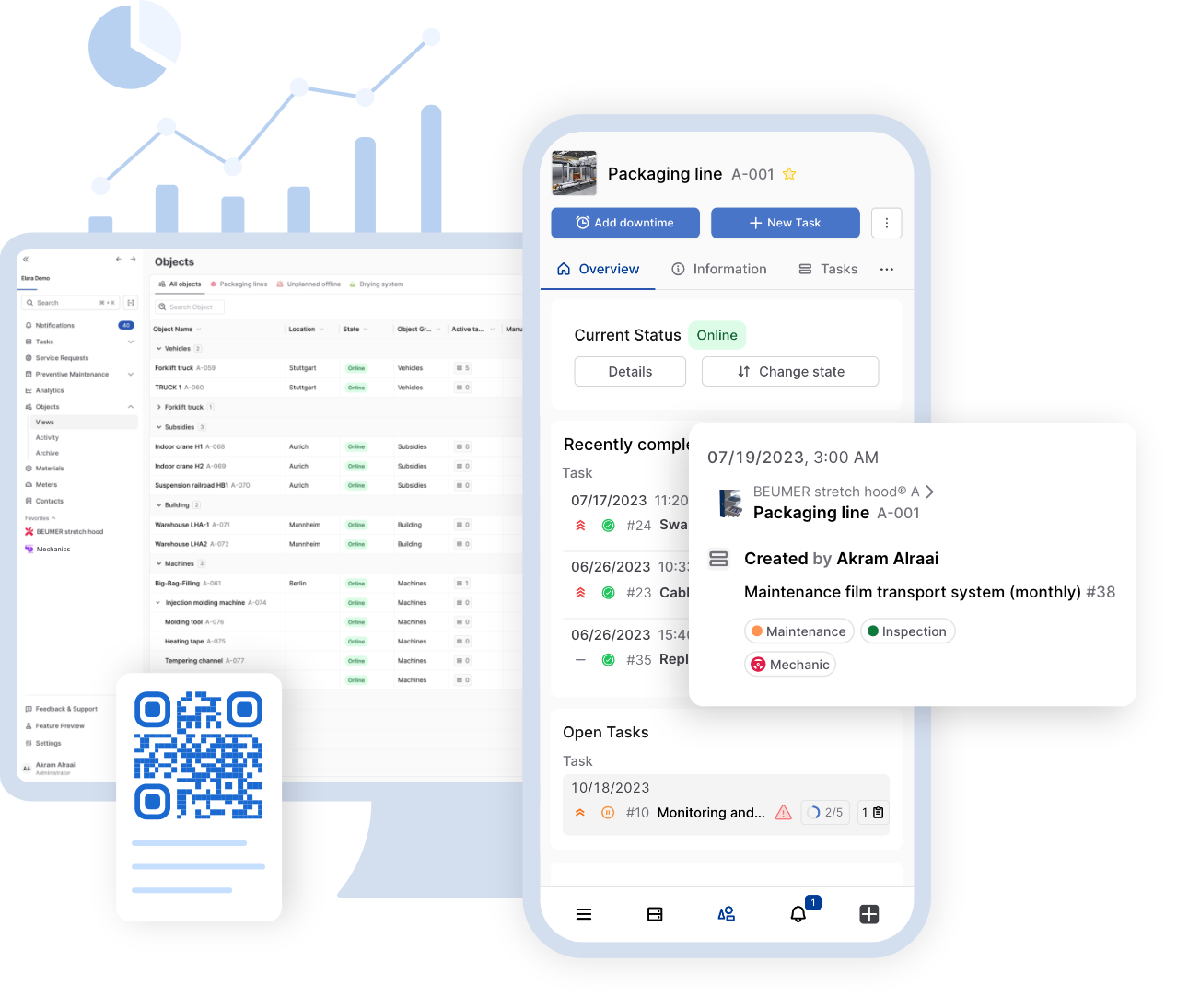Why is a maintenance plan important?
A well-structured maintenance plan helps you to
- Minimize downtimes: Preventive maintenance measures help you avoid unplanned breakdowns and expensive repairs.
- Reduce operating costs: A planned maintenance schedule reduces expensive emergency repairs and increases the service life of your systems.
- Ensure safety standards: Regular maintenance contributes to safety in the workplace and minimizes the risk of accidents.
- Meet compliance: A documented maintenance schedule allows you to meet legal requirements and audit requirements with ease.
The advantages of a maintenance plan
- Planning reliability: A maintenance plan provides you with the necessary overview and structure to plan and carry out all necessary maintenance measures. With a clear schedule, you know exactly when which maintenance work is due, which resources are required, and how long this work will take. This helps to avoid confusion and misunderstandings and ensures that no important maintenance tasks are overlooked. Forward planning also enables you to optimize your work processes and avoid bottlenecks.
- Increased efficiency: A structured maintenance plan ensures that all maintenance activities are clearly and comprehensibly documented. Responsibilities and tasks are clearly assigned, which improves collaboration within the team and increases efficiency. As every team member knows what needs to be done and when, maintenance work can be carried out faster and with less effort. This not only saves time but also resources. A well-planned maintenance process also reduces the need for last-minute, unplanned interventions, which are often inefficient and costly.
- Cost control: A transparent maintenance plan helps you to better control your expenses and plan budgets precisely. Regular and planned maintenance can avoid expensive emergency repairs and unforeseen costs. A maintenance plan allows you to determine the need for spare parts and other resources in advance and procure them efficiently. This reduces the cost of last-minute orders and minimizes inventory costs. In addition, by documenting and analyzing maintenance costs, you can identify potential savings and continuously improve your maintenance strategy.
- Plant availability: Regular maintenance according to a well-thought-out plan maximizes the availability and performance of your machines and systems. Preventive measures significantly reduce the risk of breakdowns and malfunctions. This leads to higher productivity and better utilization of your systems. Continuous maintenance also ensures that your machines are always in optimum condition, which extends their service life and increases their efficiency. This allows you to better protect your investment and increase the profitability of your equipment. A well-thought-out maintenance plan is therefore an indispensable tool for any company that wants to optimize its operations, reduce costs, and maximize the availability of its equipment.
What elements should a maintenance plan include?
A good maintenance plan template should include several important elements to ensure that it is effective and meets the needs of the business. Here are some criteria that a maintenance plan should fulfill:
- Object identification: clear details identifying the items to be maintained, including name, location, serial number, model number, etc.
- Maintenance activities: A detailed list of maintenance activities to be performed, including inspections, cleanings, lubrications, wear part replacements, calibrations, etc.
- Schedule: Determination of time intervals or specific times when maintenance activities should be performed, based on the manufacturer’s specifications, operating hours, experience, etc.
- Responsibilities: Assigning responsibilities for each maintenance activity, including designating individuals or teams responsible for maintenance.
- Materials and resources: List the materials, tools, and resources required for each maintenance activity to ensure that everything is available on time.
- Checklists and logs: Provide checklists or logs that can be used to track the progress of maintenance work and ensure that all required tasks have been carried out properly.
A maintenance plan template that meets these criteria is a valuable tool for any organization to plan, execute, and monitor its maintenance processes efficiently.



